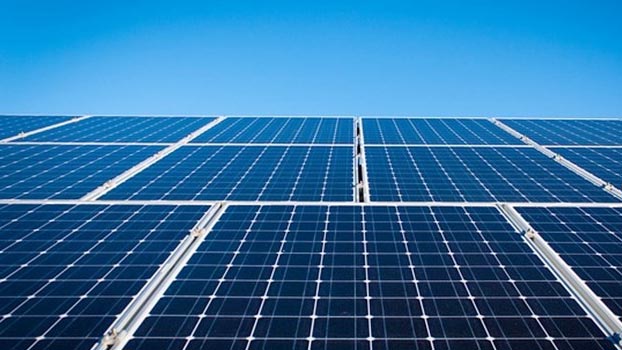1,400MW power from renewable energy by 2022

The government, over the last 10 years, has undertaken a considerable number of projects to enhance use of renewable energy. It has set a target to generate more than 1400MW of electricity from renewable energy by 2022.
To this end, the work on some 27 power plants having a total capacity of 1412MW of electricity, is now underway, according Bangladesh Power Development Board (BPDB). Such initiatives put Bangladesh in the leading edge of producing electricity generated from renewable energy (RE).
Bangladesh is the current chair of the Climate Vulnerable Forum of 48 nations on the front line of the climate crisis. The forum members are aiming for shifting to renewable energy-only economies by 2050, with the aim of keeping global warming below 1.5 degrees Celsius as agreed by international community at the 2015 Paris Conference (COP 21).
According to BPDB, currently the construction work of 11 renewable energy power plants having capacity of 508MW is going on. Of these, Sirajgonj-7.6MW solar power plant is only in public sector. The progress of the project work is around 65 percent.
Some other ongoing projects are Manikganj-35MW power plant (30 percent), Gangachara, Rangpur-30MW solar power plant (15 percent) and Cox’s Bazar-60MW wind power plant (22 percent).
Besides, some solar power plants are in their initial stages of construction, which are; Latshal, Gaibandha-200MW, Patgram, Lalmonirhat-5MW, Goaynghat, Sylhet-5MW, Monpura, Barishal-3MW, Barodurgapur, Bagerhat-100MW, Tetulia, Panchagar-30MW and Dharmopasha, Sunamgonj-32MW.
All the solar power plants are being constructed by private initiatives, which are expected to contribute electricity to the national gridline by 2021.
On the other hand, a total of 9 solar power plants are in their final agreement processing, which are; Panchagor-50MW, Pabna-100MW, Fenchuganj-50MW, Dimla, Nilphamari-50MW, Matarganj, Jamalpur-100MW, Sonagazi, Feni-30MW, Debiganj, Panchagar-20MW, Baroerhat, Chattogram-50MW and Rangunia-55MW.
Meanwhile, five power plants each having capacity of generating 50MW of electricity, are now preparing to float tenders to distribute power. Of these, two power plants are wind based, which will be installed in Inani of Cox’s Bazaar and Mongla of Khulna district. Some other solar power plants would be set up in Chuadanga, Netrokona and Chandpur districts.
Experts said Bangladesh is planning to gradually switch to renewable energy as the world is now turning to environment-friendly renewable energy due to the depletion of fossil fuels.
The government has taken various initiatives to enhance generation of renewable energy as part of its efforts to ensure energy security keeping carbon dioxide emissions at a low level.
It has set a target to increase renewable energy generation to 2,000MW, 10 percent of the total generation, by 2021 and to 6,000MW by 2041. However, Bangladesh is now generating only 650 megawatts (MW) of electricity from renewable sources.
Mohammad Alauddin, Chairman of the Sustainable and Renewable Energy Development Authority, told Bangladesh Post, “The whole world is now leaning towards renewable energy. Bangladesh government is also more sincere in this regard. Several initiatives, such as implementation of solar net metering policy, installation of solar mini grid, solar home system and irrigation pumps are some of them.
“In the meantime, several solar power plants are being planned for implementation. We are also trying to install a floating solar power system. Besides, a survey has been done on wind power. We are also planning how to expand it in a profitable way,” Alauddin added.
About 1 lakh 37 thousand people have been employed in the renewable energy sector in Bangladesh that now holds the fifth position in the world in terms of employment in the solar power sector.
Earlier, Bangladesh had attained outstanding success in the field of green energy as it secured the second position in producing renewable energy (RE), especially off-grid solar solutions, according to REN21's Renewables 2020 Global Status Report (GSR) of International Renewable Energy Agency.
Dipal Chandra Barua, President of Bangladesh Solar and Renewable Energy Association (BSREA) told Bangladesh Post, “Around six million Solar Home Systems (SHS) have been set up in remote areas across the country with direct patronization of Prime Minister Sheikh Hasina, which is currently directly and indirectly benefiting about 3 (three) crore disadvantaged rural people. This is the largest and most globally renowned Solar Programme.”
“We can generate at least 2,000 MW of electricity by 2021 from solar irrigation pumps and rooftop solar system alone. Besides, RE Projects that can be implemented, like floating solar power plants, solar- diesel hybrid mini cold storage, electrification of primary/secondary schools through renewable energy, electrification of rural areas with street lights, power plants and so on,” he added.
On June 2, a report by IRENA said the electricity generation cost from renewable energy sources, such as, solar and wind, is declining by 13 percent each year. In the last 10 years, the generation cost of solar power has decreased by 82 percent and wind power by 39 percent.
“If renewable energy-based power plants were built instead of the world's 500,000 megawatts of coal-fired power plants, it would save $23 billion a year and reduce carbon emissions by 180 billion tons. In that case, the world's total carbon emissions will be reduced by five percent.”




